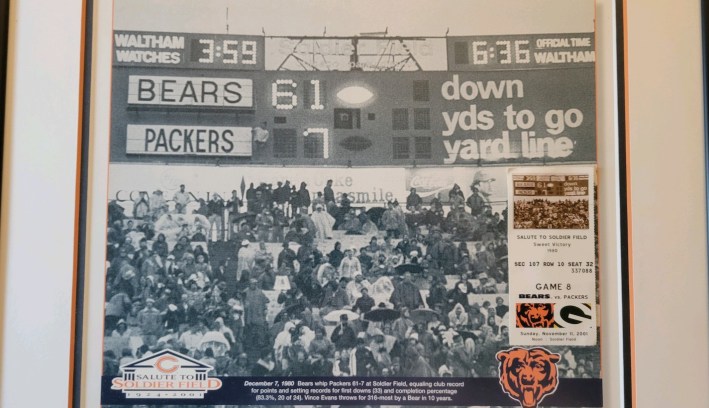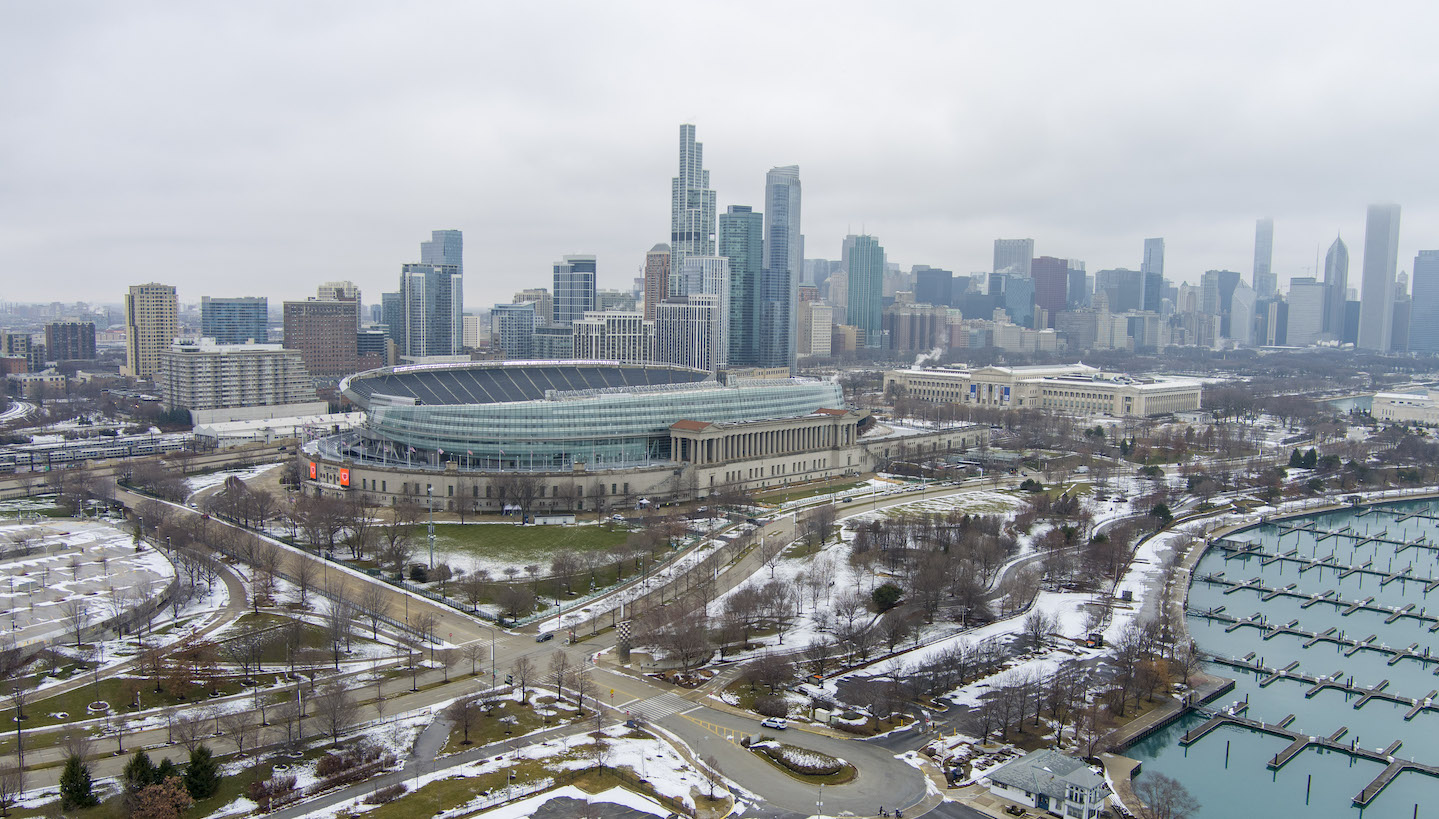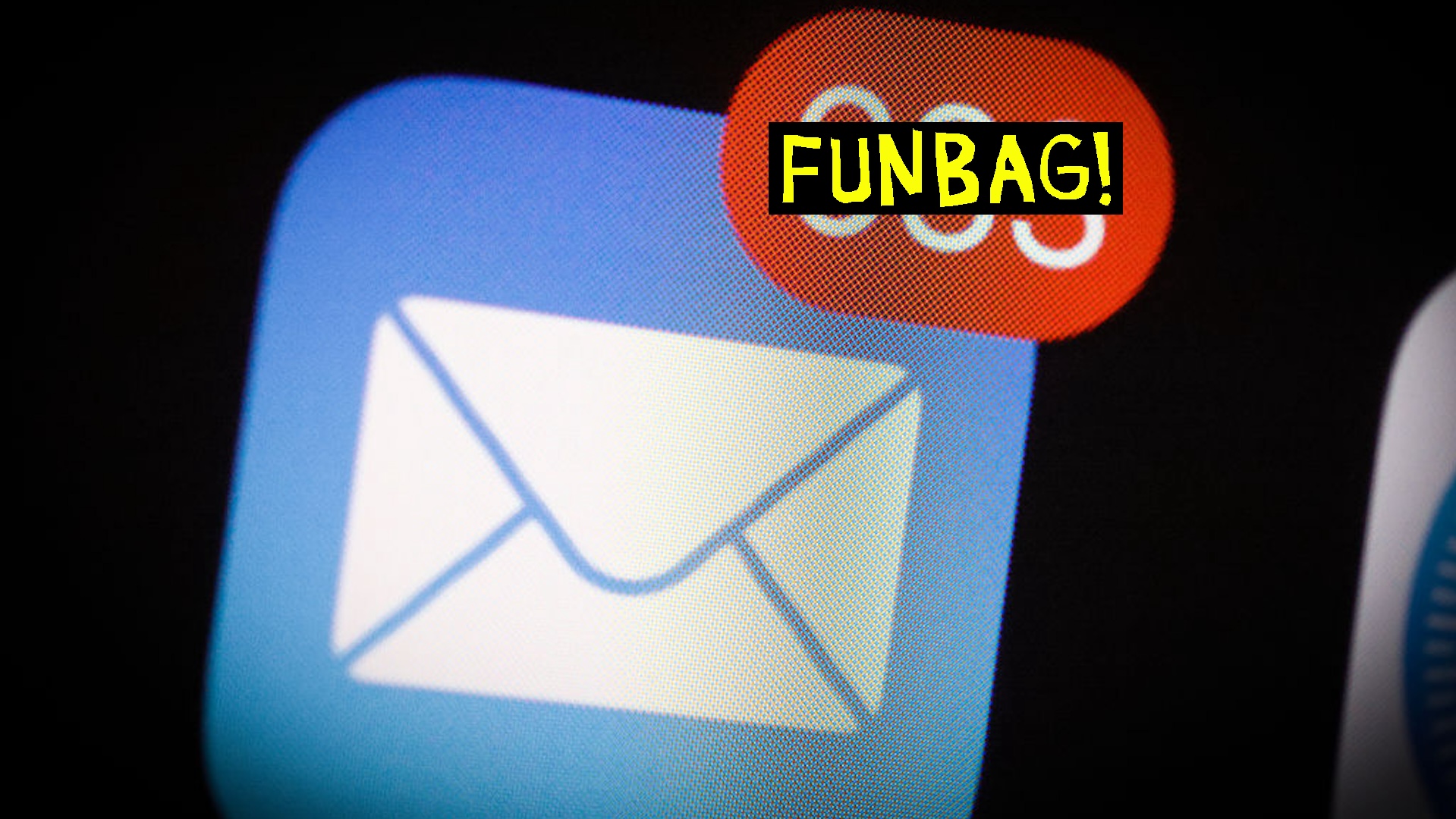The first time I went to Soldier Field was 2007. I was 14 years old, and I went with my dad and my uncle. We used my uncle’s season tickets, which had been in the family in one form or another since 1971 (except for a dark period in '90s when my grandma didn’t tell anyone that she didn’t renew the tickets). It was a cold December day. I don’t remember who the Bears played, maybe the Giants? And I don’t remember if they won or lost. (If it was the Giants, history tells me the Bears lost.) But I do remember being so impressed with the setting and the moment.
It was a night game, and the big columns guarding the stadium were all lit up. This was post-renovation, which most first-time observers will say made the stadium look like a spaceship wrecked on a Greek temple. But even with the unfortunate renovations (it was delisted as a National Historic Landmark), which made the seating less flat and wide and more high and modern stadium-like, we could still walk right next to and underneath the giant columns and watch the traffic whizz by on Lake Shore Drive. My dad pointed out the spot where our family’s season tickets used to be, pre-renovation, in a lower part of the bowl. You can still see the imprint of the stairs where the seating was. With the lake to my left, and downtown to my right, it felt like I was standing inside the skyline. And for a small-town kid, that was the coolest feeling, and probably why I am a city girl today. Just driving into Chicago to find parking for the game was a thrilling event. My anticipation grew as the roads became narrower and the buildings got taller and taller. And the walk up to Soldier Field is uniquely Chicago. I waddled in my snowpants (December, remember) past the Field museum, another work of art, and followed the zig-zaggy sidewalks in the park filled with crowds marching to the game and drummers pounding away on buckets. Old-timey street lights illuminated the path.
So naturally, the Bears want to leave this beautiful place on the lake, and move on from the only thing that makes this team interesting (it’s certainly not the on-field product). Name another NFL stadium that has Doric columns. Neoclassical columns! I mean, come on! On a nice day, I can bike all along the lakefront to the stadium. In what other NFL city can you do that?

On Tuesday, the team announced that they signed a purchase and sale agreement with Churchill Downs Incorporated, for the entire 326-acre Arlington Park land parcel, another step forward in their possible move to Arlington Heights, a perfectly bland suburb, where they can construct a perfectly bland Jewel-Osco Stadium and take more of your money. The columns and beautiful lakefront views will be gone, but at least there will be a Mike Ditka Mall and Brian Urlacher Hair Salon nearby.
Soldier Field, built in 1924, is owned by the Chicago Parks District and has the smallest capacity of all NFL stadiums. The Bears are tenants there, and they’ve been trying to leave Soldier Field for almost as long as they’ve played there. This time around, it’s just another example of the NFL money-printing machine at work. If the Bears build a new stadium with a covered roof option (goodbye “Bear weather”), Chicago Arlington Heights is pretty much guaranteed to host a Super Bowl. The Bears don’t seem interested in building a winning football team, but they do want to keep up with the rest of the league’s stuff. More seats, more tickets, more parking, more restaurants, more bars, all to cater to their wealthier fans in the suburbs.
This is the unspoken consequence of a move out of the city. The Arlington Heights Bears will be a whiter Bears audience. Arlington Heights is 84.2 percent white. The surrounding Northwest suburbs, Des Plaines, Palatine, and Mount Prospect, are all more than 69 percent white (Chicago is 50 percent white). Pro sports teams never really come right out and say that they want to move their stadiums into the suburbs so that they can attract a whiter, more affluent fanbase, but it's not hard to figure out what a team like the Atlanta Braves is after when they stop playing in Atlanta and start playing in Cobb County. The Bears are just following the same playbook.
Chicago Mayor Lori Lightfoot said Wednesday in an interview with the Mully & Haugh Show on 670 the Score that the Bears canceled a meeting with her team Tuesday. “Look, we have attempted to understand what their interests are for months and they have not shared them,” Lightfoot said. “... I can’t negotiate a deal by myself.”
The Bears opened their season at the one-year-old SoFi Stadium in L.A., which will be hosting this year’s Super Bowl, and has a surrounding complex of restaurants, outdoor movie theaters, apartments and “tree-lined promenades." They’ll also play at Las Vegas’s similarly new Allegiant Stadium, which has a club in the endzone with two DJ booths and bottle service.
Those venues are a glimpse into the Bears' future, though it’s likely years away. The team’s lease with the city goes through 2033, and the Chicago Tribune reported that the team would have to pay $84 million in damages to the city if it breaks the lease in five years.
None of this news is surprising, and that’s why it’s sad. This kind of naked greed has been driving NFL decision-making for decades now, and nothing can stop it.







